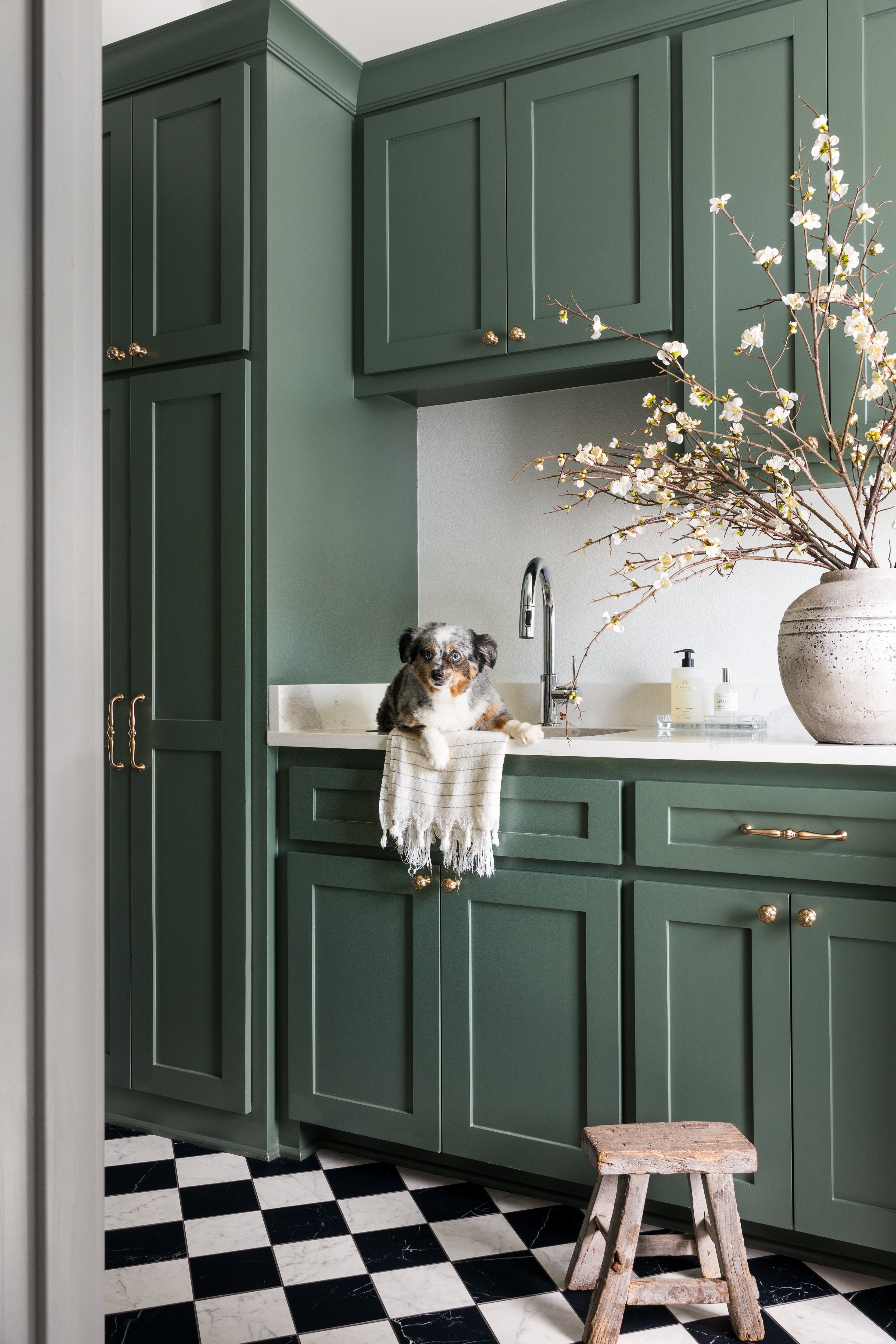Working on a new build or remodel? Realistically, you already have a Pinterest board full of bathroom ideas, and you already know what you want for our bathroom design. You may even have specific bathroom tiles that you love saved. Before you become set on those, learn the common mistakes I see from bathroom and shower tiles as an East Texas interior designer. Avoid these mistakes in your bathroom design with these tips that will teach you exactly how to pick out your perfect bathroom and shower tile before you start browsing!

Steps for Choosing Your Bathroom and Shower Tile:
- Plan your overall bathroom design
You want to make sure you have a vision for your bathroom design before you even think about looking for tiles. You don’t need to know exactly what you want, but you should have a good idea of the color, shape, and size of your dream bathroom and shower tiles that match the color palette and overall style of your bathroom design.

-
Determine your budget
The tile you end up getting will be determined by your budget range. Make sure you’re staying realistic when browsing by having your budget maximum set for bathroom and shower tiles. On average, tiles cost anywhere from $10-$50 per square foot, so keep that in mind when budgeting for your bathroom remodel.
-
Do your research
If there is a certain type of tile that you absolutely love, make sure you do your research on durability and maintenance to make sure it’s a good fit for your lifestyle. Different types of tiles will have different levels of durability and upkeep, so make sure you look into that before making your final decision.
More Tips for Choosing Bathroom and Shower Tile:
-
Consider your shower pan
Many people don’t realize that their shower pan can affect the type of shower tile they need to get. When choosing tile for a walk-in shower, the shower pan or shower floor will have to have specific tile that depends on the type of drain that is used. For example, with a linear drain, larger tiles are easier to fit with the slopes of the shower floor. A regular point drain in the middle of the shower floor will instead require mosaic tile on a mesh-mounted sheet due to the way the drain is sloped, to ensure that the pieces can be cut to fit it.
-
Think about your edging
There are four main ways to finish the edges for your shower wall tile: Schluter, bull nose, jolly (or pencil), or mitered edge. Each of them will work better with different types of tiles, so browse to see which you prefer the look of and make sure the bathroom tiles you pick work well with that style.
A Schluter edge is a flat, typically metal, piece that finishes off the edges of your tile in a simple and sleek way. This is a common and affordable trim option for many tile projects.
A bull nose is a rounded piece that sticks out a bit over the edges that adds more volume and a clearer cut look. It has a rounded edge that looks great to cover exposed edges!
Jolly or pencil edging is a thin piece of trim that creates an edge that looks almost flush with your tiles. This trim option creates a sleek, seamless transition between your tiles and other surfaces.

If you don’t love the look of trim at all, a mitered edge may be the best route for your tiles, which is my personal favorite as well! A mitered edge has every corner and every edge meet at a 90º angle, making everything look sleek, flush, and very cohesive. However, this option does require extra skill and extra work to make happen.

-
Consider the color and size of your grout lines
Lastly, before choosing your bathroom and shower tile, you want to think about how your grout lines will look with each of your options, solely the color and size of them.
There are many different options and shades for the color of your grout. Though the main colors are white, gray, or brown, you get a pretty vast choice of which shade of these you prefer! I typically recommend a warmer shade for floor tile because it makes dirt less noticeable and because white grout can start to turn yellow over time.
When considering the size of your grout lines, keep in mind that all ceramic and stone large format tile (greater than 15”) requires a minimum 1/16” grout joint according to ANSI. As an East Texas interior designer, the 1/16” is what I typically stick with for wall tiles. It gives a sleek look that still brings focus to the tiles you picked out.
For floor tiles, the width of your grout lines depends on whether your tiling consists of rectified tiles or not. Rectified tiles mean they have perfectly cut edges. If they are these perfectly cut edges, I will go with around 1/16” again if not a little bit wider, which is personal preference for how you want your grout lines to look! For non-rectified or irregularly cut floor tiles, I tend to go a bit wider with around a ⅛” grout line.

I hope this guide to choosing bathroom and shower tiles helped you with your bathroom remodel! If you’re looking for an expert to help with your next remodel, click here to inquire about my East Texas interior design services.
Read more

Picture this: you’re out shopping and find the perfect piece of artwork your home has been missing. Of course, you buy it immediately and bring it home to hang on your wall right away. Then you rea...

Whether you’re working on a kitchen, bathroom, or laundry room design, you’ll be faced with the decision to pick out cabinet styles. Knowing the different types will help you be more prepared to ma...

